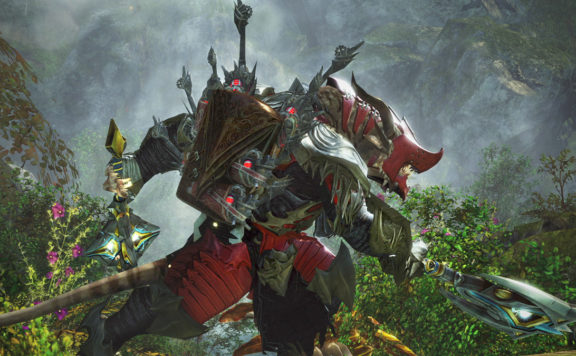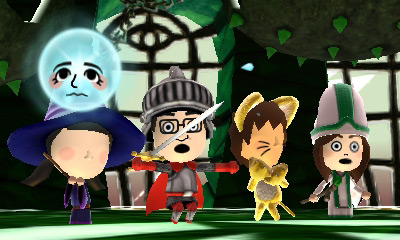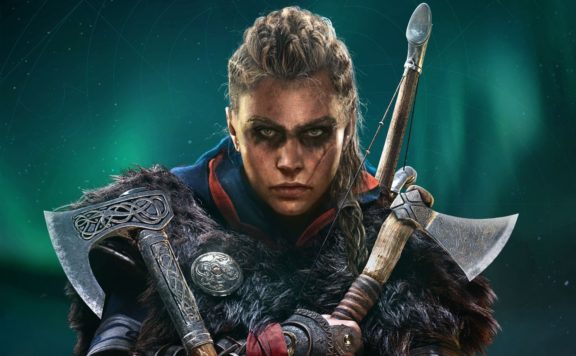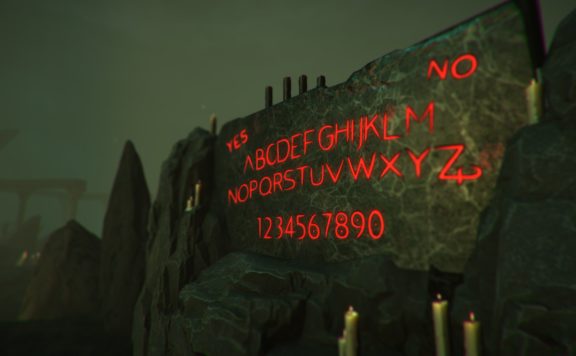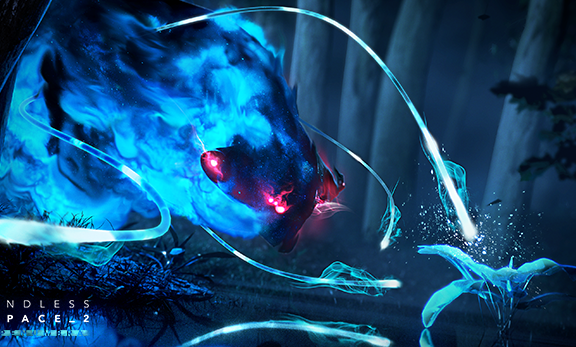The Lords of the Tomb Kings vie for control over the Black Pyramid of Nagash in Total War: Warhammer 2’s newest expansion. New mechanics and a different mindset to conquest altogether define this expansion. However, the question remains – is it good to be the King? This is our Total War: Warhammer 2: Rise of the Tomb Kings review for PC.
There is something decidedly morbid and ancient about the idea of watching – and actively rooting for – your own minions to die in battle simply because it only furthers your goal overall. Yet oftentimes in the midst of battle I found myself doing so. However, the payoff is every so often summon denizens of the Tomb Kings to wreak havoc in your enemies ranks. Total War: Warhammer 2 has always been a good game – yet the most recent expansion, the Rise of the Tomb Kings, adds a new element that hasn’t been felt in the series to date so far.
The Tomb Kings, for those unfamiliar with Warhammer lore, is the universe’s take on an Ancient Egypt civilization. It’s an interesting and fresh take away from the fantasy and European themed civilizations from the previous expansions and the base game, and pretty much every way you interact with the Tomb Kings is different from the traditional Total War formula.
The Tomb Kings feel more at home not seeking conquest of the world, but rather exploring and establishing their dominion over their homeland. As such, the denizens of Nekhehara seem to play more defensively at first glance. You can hold up in your starting area, amassing an army thanks to the unique ability of the Tomb Kings to no need to pay for the troops, or their upkeep (because you know….they’re dead). In fact, the only thing stopping you from fielding a 20-unit army right away is the recruitment time. Those fodder units mean you’ll have plenty of defense, but you’ll want to start building better units to take on the more heavily armed opponents you’ll encounter.

The limiting factor here that makes the Tomb Kings more or less even with the rest of the factions from in terms of just fielding giant armies is a global cap on some units and the army size itself. In order to field more armies, you need to research the ability to unlock another Lord. The technology tree is set up to replicate the great Dynasties of the Tomb Kings, with each one giving you access to ancient Lords to call upon. Additionally, unit totals are capped based on the number of buildings you have to support them. Want more archers? You’ll need to build out another building to support the additional units. So each army and how their comprised becomes a balancing act – and the trade-off almost makes me wish that sometimes I could just pay for the upkeep for that extra Necrosphinx instead of purchasing and building another 10K gold, and then waiting on the recruiting time to pass as well.
Since the Tomb Kings army doesn’t require gold to start or keep up, you would think that the faction of the Imperishable kings would have no need for gold. On the contrary, the units and some technologies require just as much gold to build as the rest of the factions in Warhammer 2. However, gold production does seem a little stagnant at the beginning. But, as you progress through the game, the need to not spend gold on your armies, as well as the unique ability of the Tomb Kings to gather thousands of gold treasure after a battle could mean you have a large war chest towards the end of the campaign. In fact, around turn 100 on my “normal” campaign, I was bringing down close to 8000 gold a turn with really nothing to spend it on.
The Tomb Kings also have a unique currency to play with: canopic jars. These are jars you can amass after a battle, through events and skills and some buildings even create them. The jars are instrumental in recruiting Dynastic Lords to aid you in battle, as well as awaking mythical armies of the Tomb Kings to fight alongside you.
In battle, the Tomb Kings have an advantage as well – the ability to summon units thanks to your own death on the battlefield. Never before have I hoped for unit losses in battle, but here I found myself actively rooting for it in some cases. The fodder units you can recruit with no limits are great at achieving these goals – as they don’t stand up well to the more armored and mobile units the Greenskins or Norscans are using. Once you hit a certain threshold though, you’re able to summon Khenras called Ushabti that sows fear and ruin in your enemies ranks. Additionally, in over 50 battles in my campaign, I cannot think of a single time my army has routed. They fight to the last man – er, construct. This is great as you needn’t spend time trying to rally troops – however, it does make it more likely that in evenly matched armies you’re going to sustain more losses than normal than if your troops had just fled.

In terms of the campaign itself, the Tomb Kings aren’t really interested in the Vortex quest the rest of the world is wrapped up in. Instead, they seek to control the Black Pyramid of Nagash. To do so you’ll need to find and hold five of the nine Books of Nagash and then take control of the Black Pyramid itself. As the game went on (my total campaign took about 160ish turns), I was less inclined to just start conquering, instead, I felt at ease just holding my home territories and venturing out only when I needed to find another book that may not have been in the sands near Khemri. In fact, this plays into the flavor of the Tomb Kings, with Settra oftentimes telling diplomatic representatives that he cares not for the goings on in the world around him, the power of Nagash is all he seeks. Inhospitable climates deterred me from staying outside the deserts the Tomb Kings mainly call home for long and more often than not I simply razed foreign settlements I conquered to the ground instead of occupying something that would detrimentally affect my empire.
I should note, towards the end of my review playthrough, my game became corrupted. It wouldn’t load saves, Steam cloud sharing wouldn’t work and I was essentially unable to play until I fully re-installed the game. We’ve reached out to Creative Assembly to see if this is a more widespread issue, but once the installation was complete I was able to play through the rest of my campaign just fine – so this could have simply been a bug that is due to the nature of it being an advanced copy. We’ll update this piece with any news on this front if there is anything to share.
This shift in the overall Total War mindset really makes the Tomb Kings expansion stand out. Instead of amassing all the territory you can to subdue and vanquish your enemies, the Tomb Kings feel more focused. It’s not about amassing a world empire, rather the Tomb Kings are about restoring the glory of their own empire and gaining the power they seek that way. As a result, the whole affair was shorter than my normal Total War campaigns, but it was one of the most satisfying campaigns I’ve had since the Shogun 2 days.
Rise of the Tomb Kings Review Score: 9/10
Pros:
- Tomb Kings units feel incredibly unique
- Campaign feels more focused
- Lack of upkeep cost keeps late game headaches at bay
- In-battle mechanics adds an entirely new element to the franchise
Cons:
- Unit and Lord recruitment limitations are a hindrance early on
- Economy is slow at first making infrastructure a challenge early on




